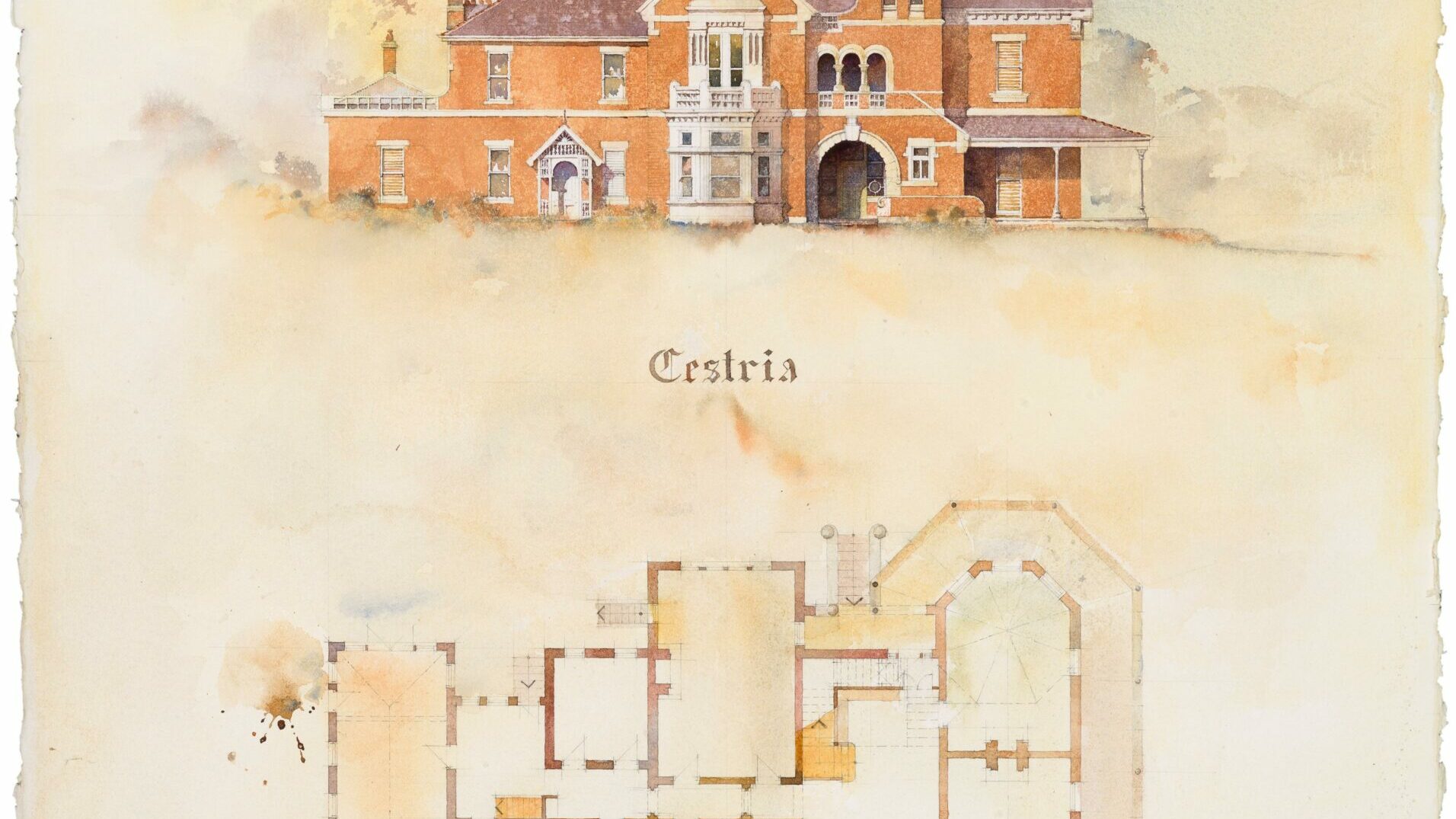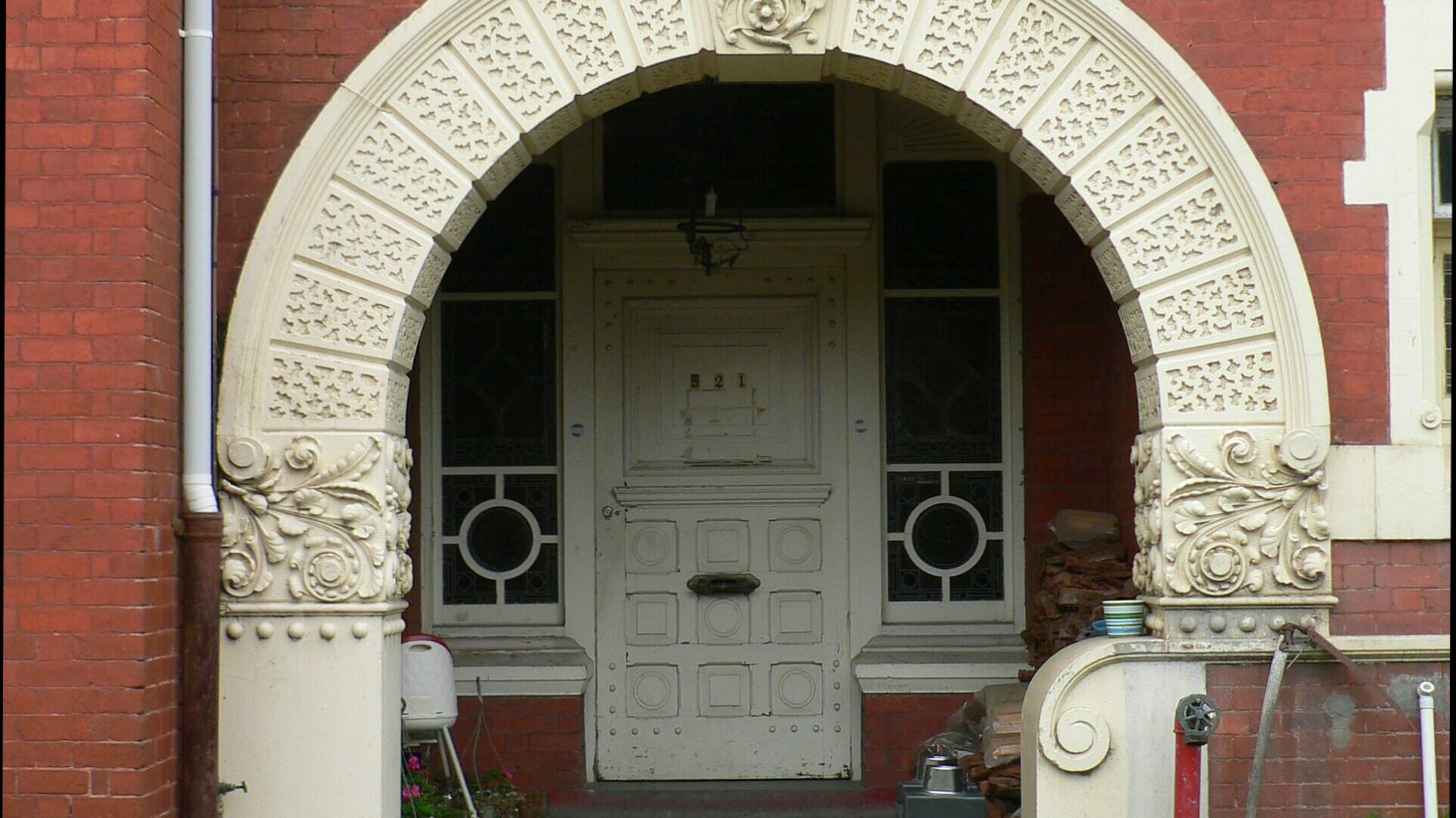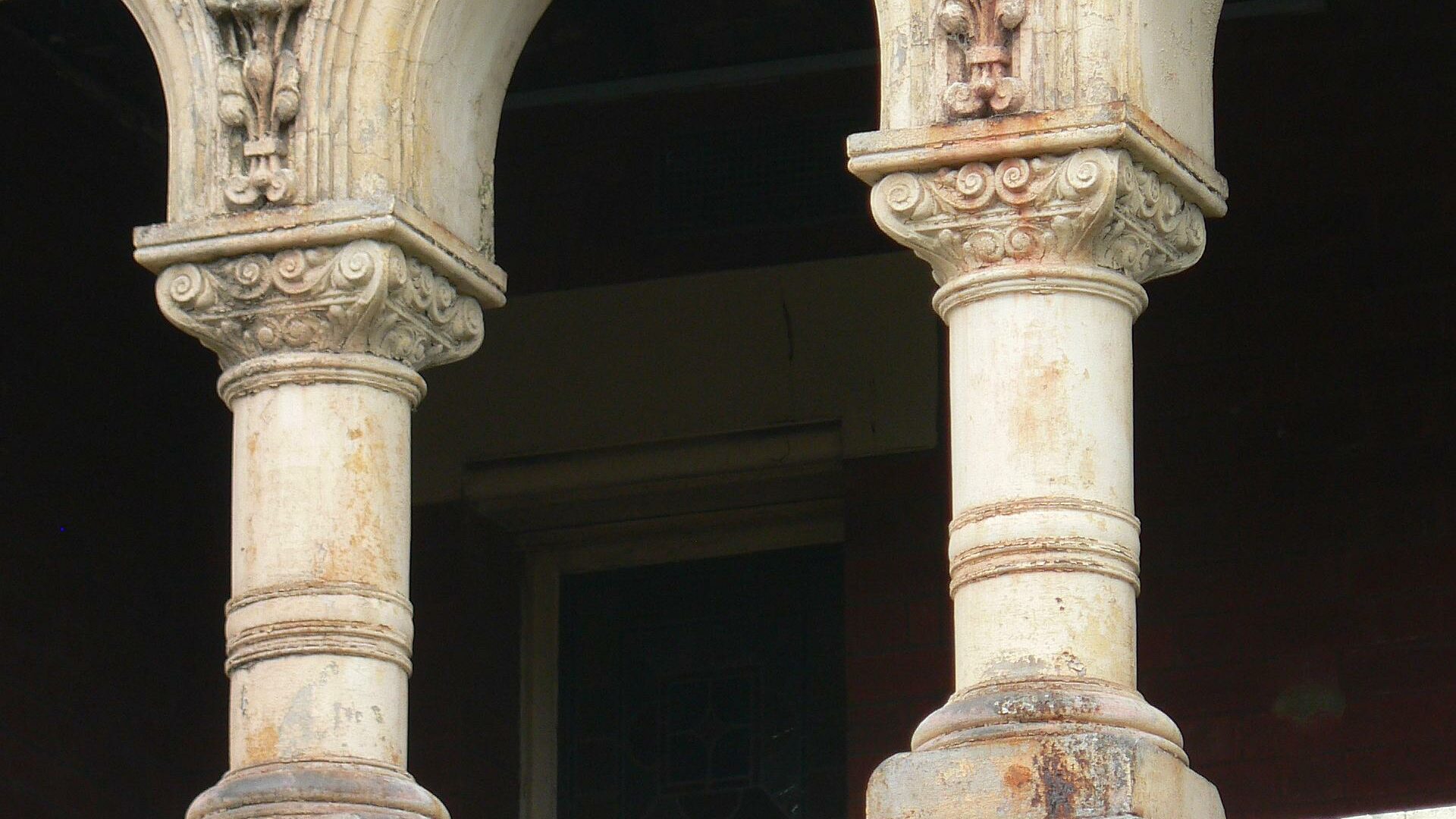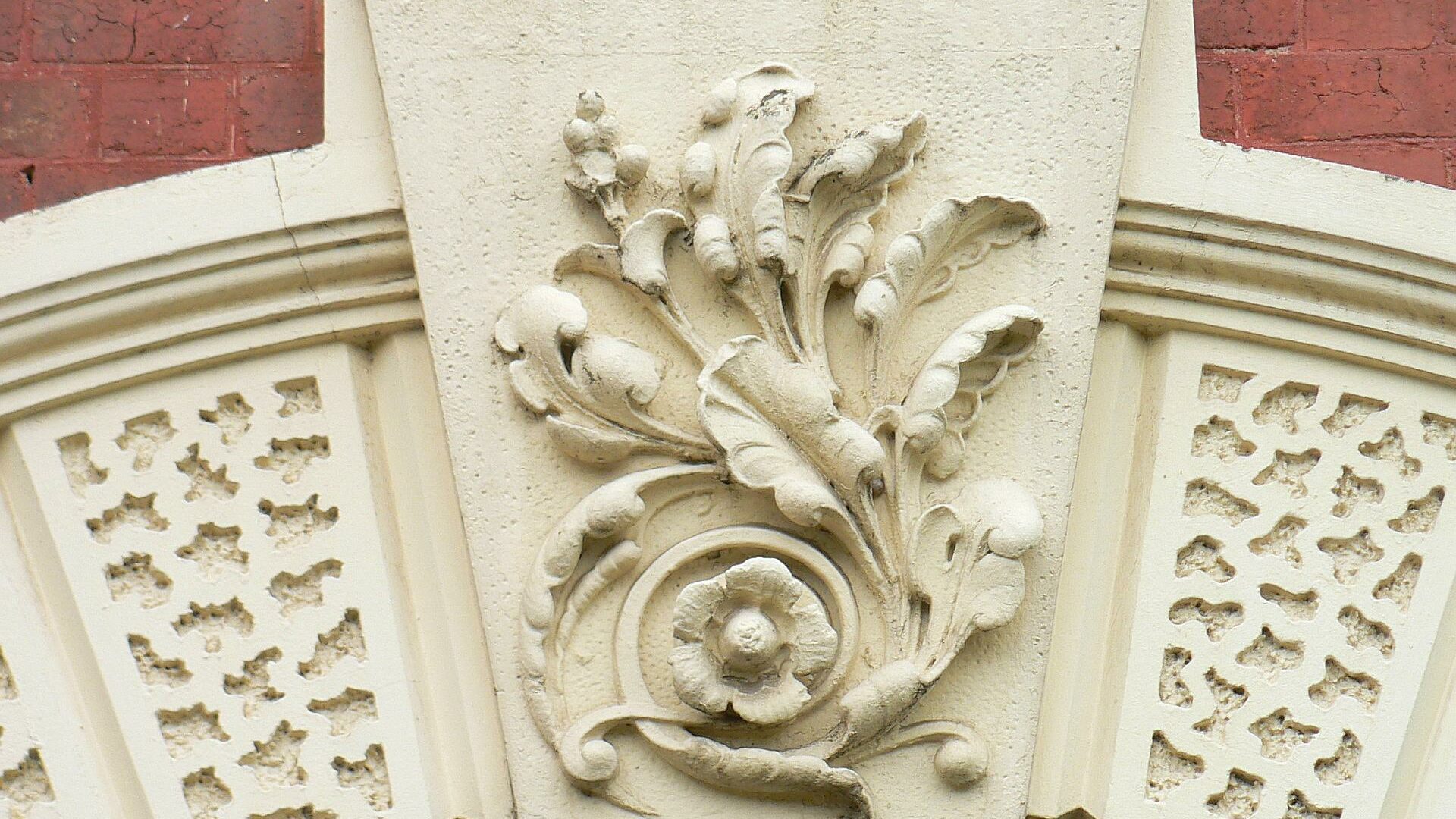Watercolour Architecture Painting of Cestria – Hawthorn, Melbourne, Australia
Wilmar Schütz was honoured to complete a watercolour architecture painting of Cestria – one of Melbourne’s most illustrious residences. This grand Victorian built in 1891 represents a never to be repeated opportunity in position of premium appeal at the summit of Scotch Hill in Hawthorn. The allotment of 2851sqm features a 46m frontage to Glenferrie Road and surrounds evocative spaces. Previously configured as a rooming house, the present mansion house has once again returned to owner-occupation. The original 4m ceilings and rich authentic period detailing remain intact and inspire a restoration project of un-paralleled scope. Brought to life by Wilmar Schütz in watercolour painting, Cestria is a true architectural masterpiece.
Property History
Designed by architect Edward George Kilburn of Ellerker and Kilburn, Cestria was originally built for the wealthy biscuit manufacturer Thomas B Guest in 1891. The design of Cestria was influenced by Kilburn’s visit to America. The buildings he saw during his stay undoubtedly influenced the final design of Kilburn’s new interest in American Romanesque style. This style became popularly known as the ‘American Romanesque’ style and would later become identified with some of Kilburn’s other most distinctive architectural designs.
Architectural Features
As you can see from our watercolour architecture painting of Cestria, the grand three-storey mansion house features a striking four-storey tower over the main entrance. It is constructed from tuck-pointed face red brick relieved with cement rendered window and door dressings. A broad veranda on cast iron columns shades the ground floor on the north and west. The roof is of Welsh slate and dressed with terracotta crestings and finials. The main entrance is through a characteristically American Romanesque semi-circular archway. Semi-circular headed openings are evident on windows and the second stage arcades of the tower. Flat arch windows group together on each side of the towers fourth stage.
The perforated waffle balustrade on the main facade is repeated as a motif in openings to the north elevation. Internally, the impressive hall and staircase are constructed from mahogany and walnut, adding to the distinctively American feel. The stairwell is lit by three large windows with centrally placed stained glass panels depicting rural scenes, surrounded by leaded and coloured geometric glass.
Special Comments from Chris Wilmar, Architect
Cestria is described by the Victorian Heritage Register as ‘the greatest domestic example of the American Romanesque style of architecture in Victoria’. The American Romanesque style readily lent itself to picturesque effects and a style suited to the Australian climate. Cestria is particularly significant as a reaction against the prevailing popularity of the Italianate style, which was characterised by cement rendered walls, parapets dressed with urns and other decorative cast iron elements. Cestria is significant for the part it played in the debate about an appropriate national style of architecture. The emergence of the American Romanesque and other red brick styles was central to the question of adapting an existing style to Australian requirements rather than creating a new one.
If you’ve enjoyed our watercolour painting of Cestria, you may wish to view other architectural properties in the portfolio section of our website. You can also contact us for more information.







